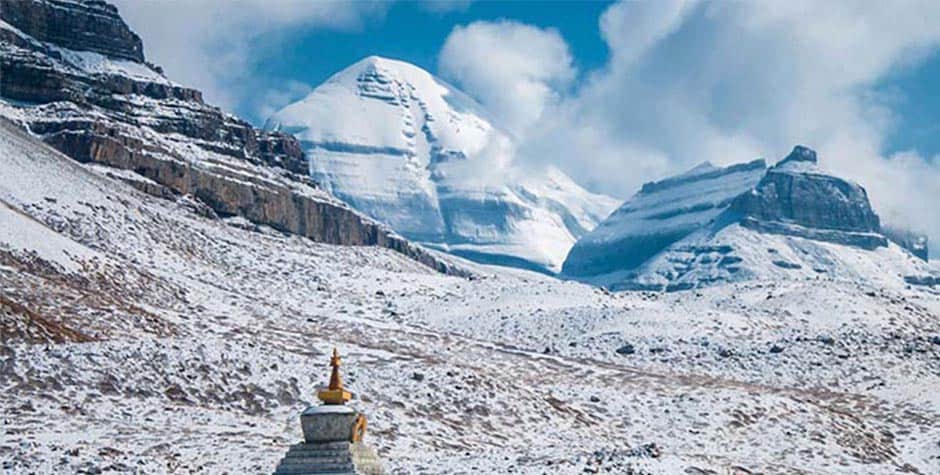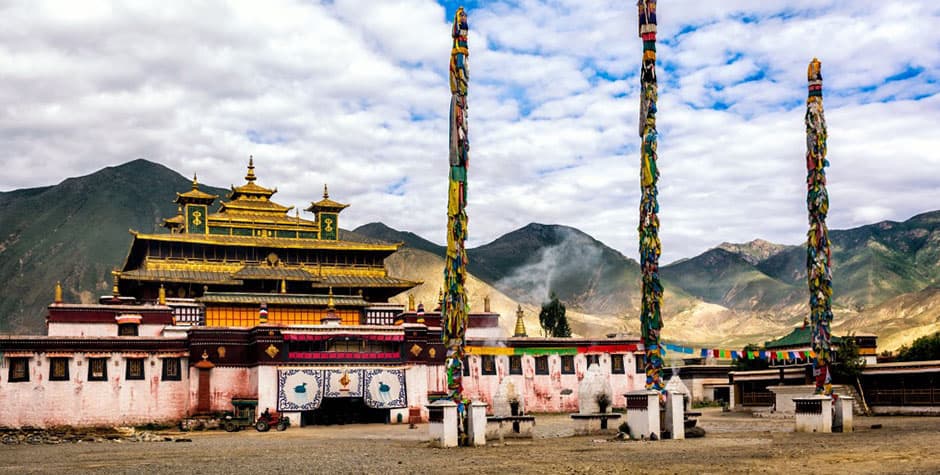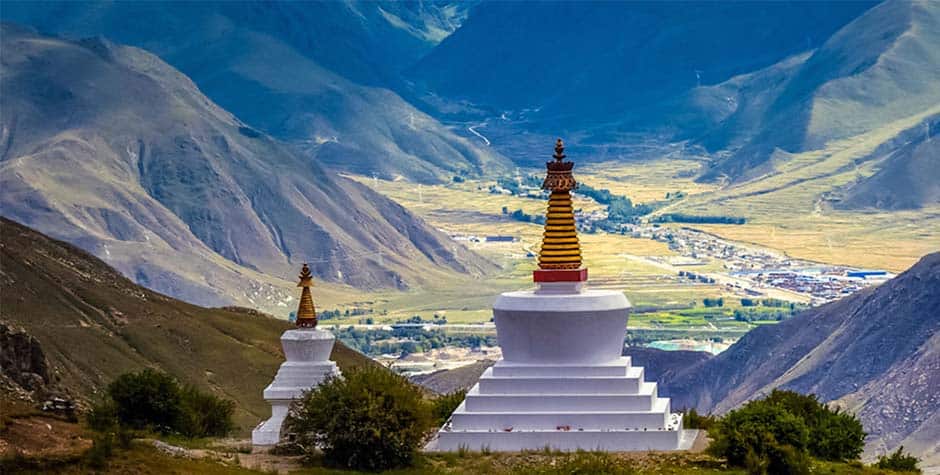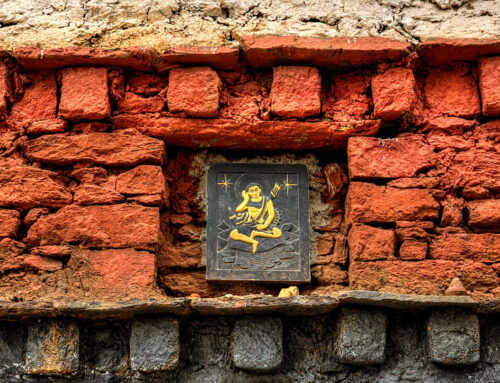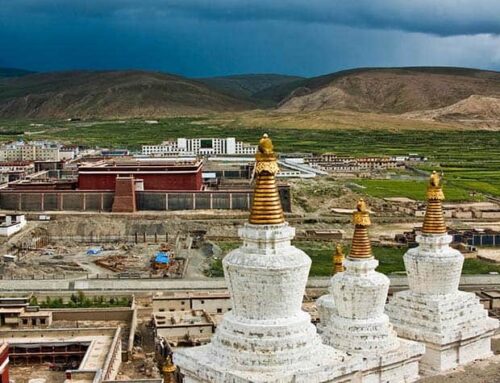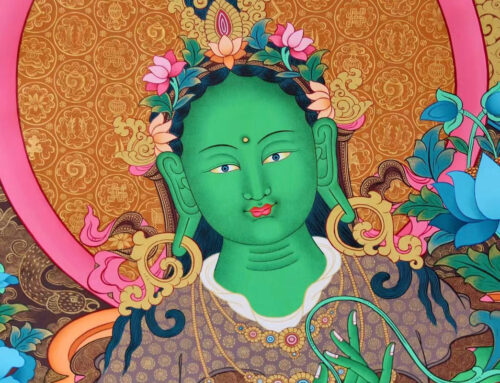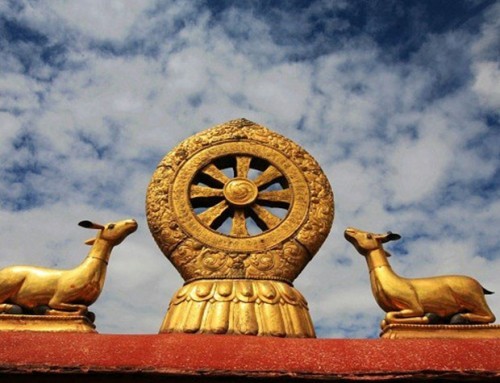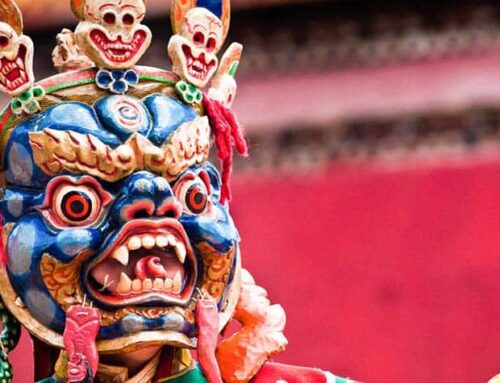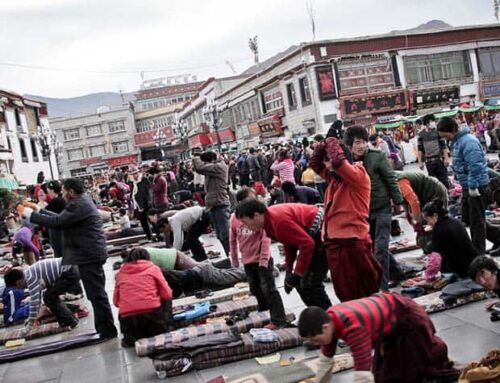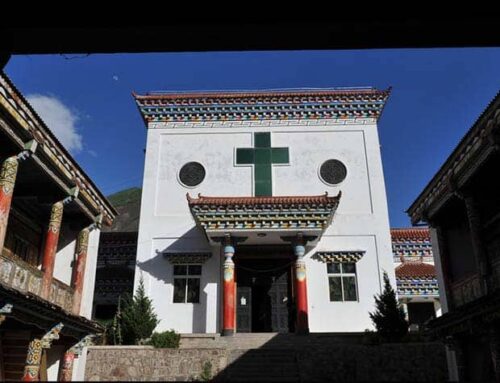When you travel to Tibet, you will often find a butter lamp as an offering of light in personal alters in the home, temples, and monastery. This act of offering light to the Buddha statue and bodhisattvas is not just a tradition but a profoundly spiritual practice that is said to bring us positive virtue, wash away ignorance, and bring wisdom.
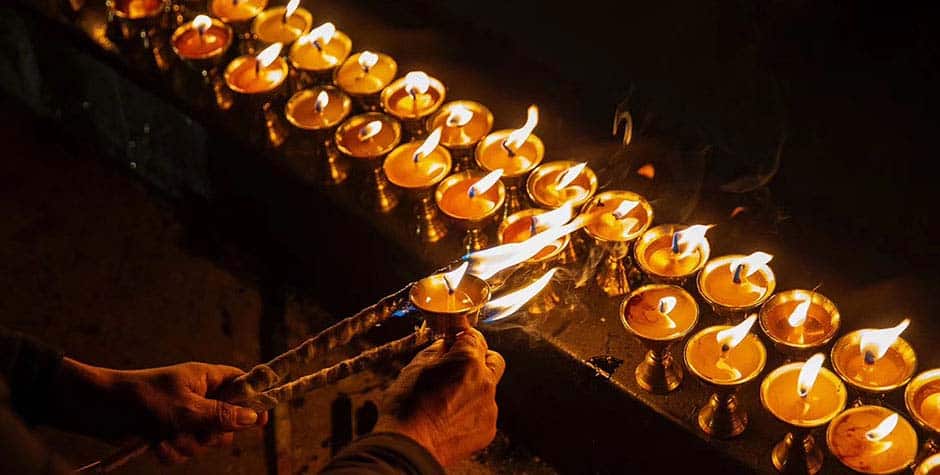
The Tradition of Offering Lamp
The lamp/light offering tradition can be traced back to the historical Buddha Shakyamuni. Lamp offerings in Tibetan Buddhism symbolized the enlightenment of Buddha. Light and enlightenment dispelled the darkness of ignorance, which covers the true nature of the mind. With each lamp offering, we celebrate the enlightenment of Buddha, which also brings good fortune.
Butter Lamp offerings also carry the practitioners’ wishes to attain Buddhahood, eagerness to recognize the clear light at the time of death, and experience liberation at the moment. In this way, lamp offerings are associated with the transitions of life. Lamp offerings represent the wisdom of awakened ones and compassion.
You will see all the personal alters in Tibetan homes. Temples and monasteries offer a lamp to their magnificent Buddha Statues, Stupas, and scripture containing the teachings of the Buddha. The lamp is provided continuously throughout the years, radiating the prayers and aspirations of pilgrims. You can offer the butter lamp while visiting the temples and monasteries. You can ask our Tibetan tour guides to help you with the butter for the offering.
The Special Intention in Offering The Butter Lamp
As a lamp offering is associated with good fortune, a Tibetan butter lamp is offered for any individual or family event, such as the celebration of childbirth, marriage, examination, graduation, birthday, and anniversaries. This inclusivity of the tradition makes everyone feel welcomed and accepted.
It is also offered during times of difficulties or uncertain transitions. Accompanying with prayer, the lamp provides help to bring less suffering and greater happiness during illness, loss, and death. The lamp can be offered for friends facing an operation, a spouse changing careers, a student facing an exam, or a family member facing stress. Especially at the time of someone’s death, It is our tradition after death rituals to offer lamps for the next 49 days to help the deceased pass through the Bardo, a transitional state between death and rebirth in Tibetan Buddhism.
The prime intention of the lamp offering is to dispel the darkness of ignorance and help them to pass through the changes and difficulties with the light of wisdom and compassion.
The Benefits of Making Offering the Lamp
As Buddhists, we believe all beings are circulating in the endless circle of life and death. We are in this circle of samsara due to our ignorance. As the lamp brings light in the darkness, the teaching of Buddha, wisdom, and compassion is the light in the darkness of samsara.
In Sutras, it is mentioned that an offering of light and incense is made. We generate immense merits. It is believed to make tens of thousands of light, incense, and flower offerings; you will be born during the time of the future Buddha. What could be more holy and precious than getting teaching from the enlightened teacher himself?
The lamp is also used as the object of meditation in the initial stage of the training.
How to Make Butter Lamp?
First of all, before discussing how to make a butter lamp. It doesn’t necessarily have to be a butter lamp to offer light. We can offer a lamp on an electric lamp or candle or an old lamp. But you will have to remember to have it very clean. In Tibet, we use butter for its abundance and cleanliness. If your region doesn’t have good butter for offering, you can use oil or candles to offer the light. Yet, the most important is the intention behind the offering. Here, we will discuss how to make a butter lamp, yet you can change it to vegetable oil.
Preparation it making Yak Butter lamp
Here are the few items we need to make the butter lamp.
Chunk of Butter
Tibetans’ two most prominent lifestyles in Pleatue are the Nomad and the Farmer. In both cases, the family has some animals in the House to get the milk. This is why Tibetan families often have more butter than oil. You can use oil if it is a better option in your locations.
Container to melt the butter
All Tibetan families have a dedicated container to melt the butter for the lamp. Like all the ritual items, we would keep it clean and separate it from the rest of the kitchen wares. The most commonly used container to melt the butter for the Butter lamp would be in the shape of a kettle, as it does not require opening it to pour the melted butter. We would usually make a paper fan to close the kettle’s spout.
Stove
We need a place to heat the butter to melt it. In Tibet, we typically use the yak dung heath to make food and melt butter for the lamp. You can use any source of heat to melt. But please remember that if you melt the butter in very hot heat, you might burn the butter, which is not suitable for the butter lamp.
Wick
Wick of the butter lamp can be made with both wool or cotton. Nowadays we use more cotton for it, as it is better available in the market. Yet you can use wool, too. A piece of straw will use in the middle of the wick. We will use the skinny straw if you need a thin wick and vice versa. Fiber must roll the around the straw to make the wick. Yet, in Lhasa, we don’t make it; instead, we buy it from the needy people in Barkhor who make it for a living.
Lamp
The final requirement is the lamp. The lamp can be made of any material. The most common are made from brass and copper. Yet, we would make it from a dough of Tsampa or wheat for some rituals.
Steps in making Tibetan Yak butter lamp
Clean the lamp
The first step is to make sure the lamp is clean for reuse. We would often pile up the lamps and clean them together rather than doing it separately. So it is wise to check and reclean the lamp.
Putting the wick on the lamp
Before you heat the butter, it is always better to begin putting the wicks on the lamps. Tibet is very cold in the winter, and we have a very short time to pour the melted butter into the lamp.
Melt the butter on heat
While melting the butter, you will have to minimize the heat of the fire to prevent the butter from burning. You don’t want to overheat the butter. Once all the solid form of butter turns into a transparent and liquid form, you must stop heating.
Pouring the butter on the lamp
When you pour the butter into the lamp, don’t miss pouring it on the wick. If you don’t pour it on the wick, the lower wick will become loose in the liquid butter. If you pour it on the wick, it will become heavy and fall into the butter. So the best way is to start pouring on the top of the wick in the beginning and let it hard with the cooling butter while you pour it on the rest of the lamp.
Let nature do it, cooling
Just cool off the butter lamp before storing it away.
Butter Lamp Offering
When you are offering the butter, in your mind, you must feel that you are offering this to the real Buddha or your master in person.
- So, the first thing to do is to ensure all the areas around you are clean.
- Then wash your hands.
- Burn the lamp with the specially designated lighter or matches only for the butter lamp.
Place the lamp on a safe, flat surface without handing Khatas around. - Sprinkle a clean water lamp with saying a prayer. or this Mantra (Aum Ah Hum)
- You can also bring an additional offering, like water and incense, to the altar.
Travel guide for the butter lamp
While traveling to Tibet, your tour will lead you to some monasteries. We recommend that you offer the butter lamp to any monastery or temple. Yet each monastery has different regulations regarding the butter used in the lamp. Please check with your tour guide about buying butter for the lamp or Light offers.
Read more about Tibet Travel Information and Tibet Tours. Please visit our blog: Nomadictibet.com.
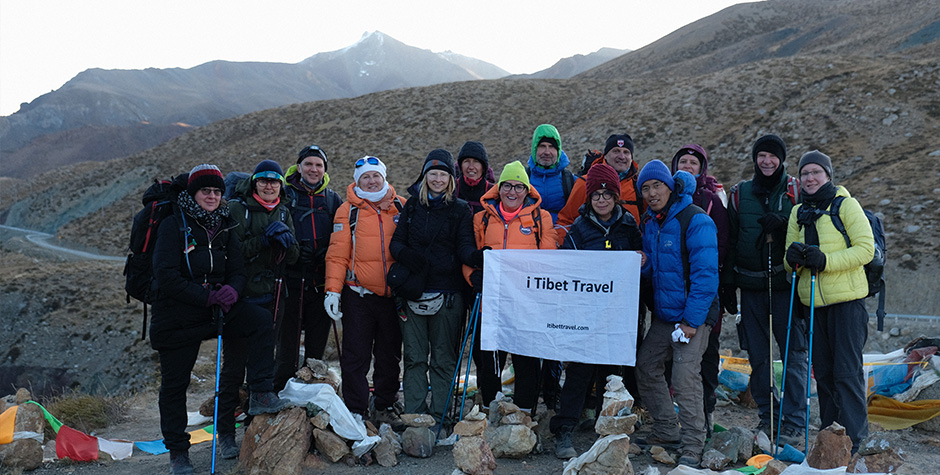
Tenzin Travel is the best Tibetan Travel agency in Tibet. Our agency is one of Tibet’s most experienced tour operators, with over 20 years in the industry. Founded by a local Tibetan family with decades of expertise as guides, managers, and route planners, we craft personalized itineraries for every traveler. We are the highest-rated and most recommended Tibet travel agency on TripAdvisor, Google, and LonelyPlanet.
We can make holistic arrangements for your trip to Tibet, including a Tibet Travel Permit, a Tibetan tour guide, flight tickets, train tickets, vehicle arrangements, and hotel bookings in Tibet.
Our Lhasa office is just steps from Barkhor Square, and our all-Tibetan team ensures deep cultural, linguistic, and religious insights, setting us apart from other agencies.
Beyond tourism, we support Tibetan communities by donating a portion of each tour to local projects. Your travel to Tibet is about more than profit—it’s about the opportunity for us to give back.





